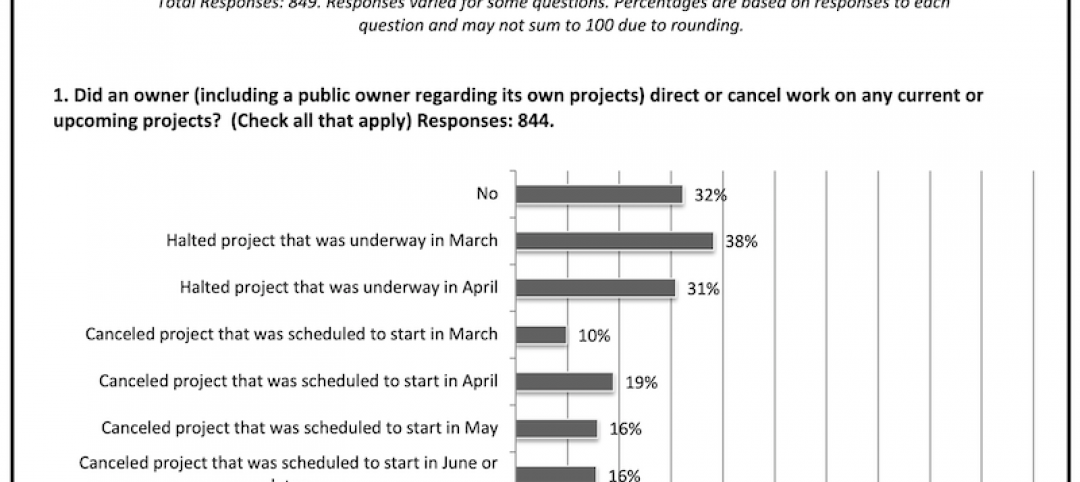I got an interesting letter—yes, an actual letter, in an envelope, what a concept!—the other day from Ray Kogan, AIA, Principal of Kogan & Company, a management consulting firm in Arlington, Va. (Ray and his colleague, Cara Bobchek, will be conducting a half-day workshop at our BD+C "Under40 Leadership Summit" in NYC later this month—Sept 18 to be exact—teasing out the role of "scenario planning" as a key component of strategic planning for AEC firms.)
Back to Ray's letter. "The demographics are compelling and irrefutable," it stated. Baby Boomers constitute a huge proportion of professionals in design firms. Extrapolating from U.S. Census data, Ray estimated that one-third—33%—of employees at A/E firms are older than 55. That's a good estimate, considering that the AIA says that 44% of all U.S. architects are older than 50.
Here's the unnerving part (again, using U.S. Census data as the base): "In the next 15 years, the number of architects and engineers aged 55-64 will increase by 47%, while the number of those aged 33-54 will decrease by 6%." Put all those numbers together, he surmises, and the country can look forward to an "exodus of tens of thousands of Boomer architects and engineers from the profession they have served for decades."
Kogan's conclusion: The exodus of the Boomers will lead to the loss of "an incalculable amount of valuable knowledge—technical, managerial, and institutional." The loss of thousands of Baby Boomers who currently form the core management base of their firms will be especially wrenching for the A/E sector. Somehow their knowledge and experience has to be captured for their firms to survive down the road.
The clock is ticking, says Kogan. "Capturing and institutionalizing the knowledge they've gained through the decades is a one-time opportunity—really an imperative—for our firms, our profession, and our industry."
Ray and I would love to hear your thoughts on this topic. Send them to: rcassidy@sgcmail.com.
More from Author
Rob Cassidy | Mar 30, 2020
Your turn: Has COVID-19 spelled the death knell for open-plan offices?
COVID-19 has designers worrying if open-plan offices are safe for workers.
Rob Cassidy | Mar 25, 2020
Coronavirus pandemic's impact on U.S. construction, notably the multifamily sector - 04-30-20 update
Coronavirus pandemic's impact on U.S. construction, notably the multifamily sector - 04-30-20 update
Rob Cassidy | Nov 20, 2019
Word of the Year: "climate emergency," says the Oxford English Dictionary
The Oxford Word of the Year 2019 is climate emergency.
Rob Cassidy | Nov 8, 2019
The Peloton Wars, Part III - More alternatives for apartment building owners
ProForm Studio Bike Pro review.
Rob Cassidy | Nov 1, 2019
Do car-free downtown zones work? Oslo, yes; Chicago, no
Two recent reports (October 2019) explore whether car-free downtowns really work, based on experience in Oslo, Norway, and Chicago.
Rob Cassidy | Oct 9, 2019
Multifamily developers vs. Peloton: Round 2... Fight!
Readers and experts offer alternatives to Peloton bicycles for their apartment and condo projects.
Rob Cassidy | Sep 4, 2019
Peloton to multifamily communities: Drop dead
Peloton will no longer sell its bikes to apartment communities.
















